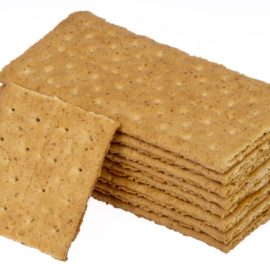
Derived from the Khewra Salt Mine in the Himalayan foothills of Pakistan, Himalayan salt primarily comprises sodium chloride, supplemented by trace minerals like magnesium, potassium, and calcium that contribute to its pink hue. This salt deposit’s origins trace back millions of years when an ancient sea covering the area evaporated, leaving substantial salt accumulations. Over time, geological shifts and immense pressure transformed these deposits into the pristine Himalayan salt known today.
Culinary enthusiasts have increasingly embraced Himalayan salt blocks for their distinctive qualities and benefits that elevate cooking. Beyond their captivating visual appeal, these blocks ensure remarkable heat dispersion, reducing cooking durations. Additionally, an intriguing facet of cooking with these blocks is their capacity to prevent excessive saltiness in dishes.
You might also like: How Salt And Ice Bath Freezes Ice Cream Faster
Let’s discuss these two benefits further.
HEAT DISTRIBUTION AND EFFICIENCY
Himalayan salt blocks, slabs, and plates have gained popularity among both chefs and home cooks, and for good reason. A notable application of Himalayan salt is optimizing heat distribution in cooking and baking.
Himalayan salt blocks exhibit exceptional heat distribution capabilities, setting them apart from conventional cookware. When heated, they effectively and evenly disperse heat across their entire surface, unlike traditional pans with potential hot spots. This even heat distribution ensures uniform cooking of your food.
These salt blocks feature a crystalline lattice structure mainly composed of sodium and chloride ions. As heat is applied, the ions gain energy and transmit it across the lattice, uniformly spreading thermal energy. This arrangement, coupled with the mineral-rich composition, establishes thermal equilibrium across the surface.
Consider searing a steak as an example of the heat distribution’s impact. Placing a thick steak on a preheated salt block allows even heat transfer, ensuring an evenly cooked steak with a seared crust and tender interior. No hot spots mean no worries about uneven cooking. Every bite becomes a perfectly cooked delight.
Using a Himalayan salt block for grilling vegetables guarantees uniform cooking, adding a delightful char while retaining crispness. In baking, the block’s consistent gentle heat ensures even rising and browning of delicate pastries, resulting in a golden, flaky crust.
PREVENTING DISHES FROM BECOMING SALTY
This intriguing benefit is attributed to the unique composition of Himalayan salt and the way it interacts with flavors during the cooking process.
The key factor that sets Himalayan salt apart is its lower sodium content compared to traditional table salt. While both salts contain sodium chloride, Himalayan salt also contains trace minerals. Various studies have found Himalayan salt to contain magnesium (146.78–11937.98 mg/kg), calcium (530.62–5736.73 mg/kg), and potassium (98.39–4528.89 mg/kg). These minerals contribute to a more nuanced and well-rounded flavor profile. When used in cooking, Himalayan salt disperses these minerals along with its sodium content. This results in a milder and less harsh salty taste.
You might also like: Main Functions of Salt (Sodium Chloride) In Food
Additionally, the larger crystal structure of Himalayan salt means that less of it fits in a teaspoon compared to finely ground table salt. This means that when a recipe calls for a specific volume of salt, using Himalayan salt might result in less actual sodium being added to the dish. And yes, the coarser texture of Himalayan salt makes you incorporate less sodium in your dish.
In terms of weight, the sodium content in table salt and Himalayan pink salt remains identical. According to the United States Department of Agriculture (USDA), a 1/4 teaspoon of standard table salt contains 581 milligrams of sodium, while an equal measure of Himalayan pink salt contains 388 milligrams of sodium. This could be advantageous for individuals looking to manage their sodium consumption, which is often linked to various health concerns, such as high blood pressure.


